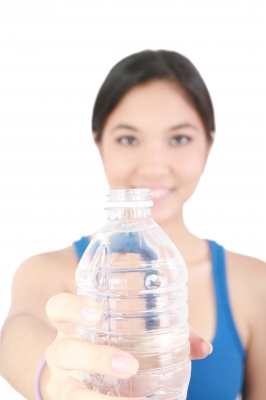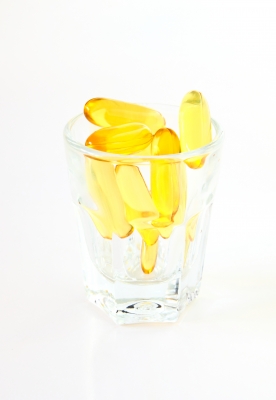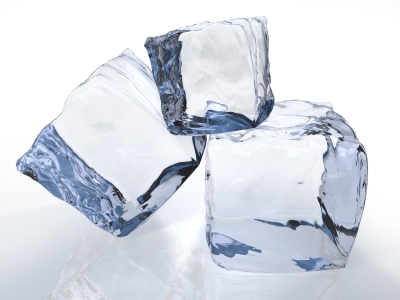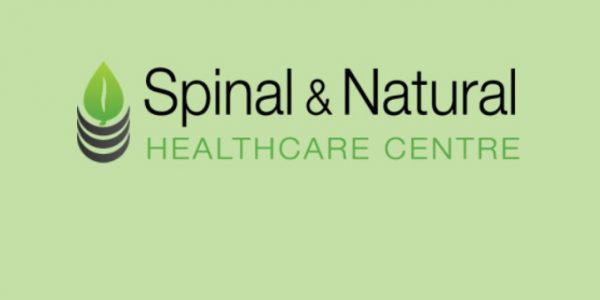Although all are equally important, there are a couple of points here that are in my mind, really important. I have listed them in order of preference up to and including training, then post training. However, as I learn more from reading and personal experience I may well change it.
I would point out, that this is my preference, but give it a try and tell me what you think. I would also point out my entrance into Crossfit training comes from a past history of contact sports, primarily rugby. I have had Chiropractic care since a child which resulted in me training as one. However I also damaged my knee playing rugby some 20 years ago.
Regular chiropractic care and the odd massage has kept me on the straight and narrow until someone rather thoughtlessly decided to drive into the back of my car at the end of 2012. This has set me back quite significantly, so my recommendations are based on someone suffering from injury whilst trying to achieve optimum performance and wanting to maintain my future health and flexibility as a 37 year old dad of a very active 3 year old!
Hydration:
 This is my primary one. Dehydration is a major predictor of fatigue during sustained high intensity exercise. Inadequate water intake results in thermal stress, low plasma volume, premature fatigue and impaired recovery. More importantly, dehydration leads to potential injury whilst training as the muscles and ligaments are more prone to damage. Think of a piece of fresh steak from the butchers, then think of a piece of beef jerky. I’m sure you get the idea. As such, drink 2 litres of water per day as an absolute minimum. More if possible. A little trick that also helps. It is best to stay in an alkaline state, especially if you are increasing your protein levels, so try and squeeze a fresh lemon into those two litres plus of water a day. As lemon is broken down in the body, it becomes alkaline (see my alkaline food chart and article on blood acidosis here )
This is my primary one. Dehydration is a major predictor of fatigue during sustained high intensity exercise. Inadequate water intake results in thermal stress, low plasma volume, premature fatigue and impaired recovery. More importantly, dehydration leads to potential injury whilst training as the muscles and ligaments are more prone to damage. Think of a piece of fresh steak from the butchers, then think of a piece of beef jerky. I’m sure you get the idea. As such, drink 2 litres of water per day as an absolute minimum. More if possible. A little trick that also helps. It is best to stay in an alkaline state, especially if you are increasing your protein levels, so try and squeeze a fresh lemon into those two litres plus of water a day. As lemon is broken down in the body, it becomes alkaline (see my alkaline food chart and article on blood acidosis here )
Nutrition:
Eat the closest modern equivalent possible to “animals caught via hunting, and uncultivated plant foods from gathering”.
PROTEIN (lean and unmodified animal protein – Fish, red meat, poultry, seafood,eggs. Try wild game whenever possible as it is higher in omega 3. Try grass fed foods and if you get fish from the counter rather than having a crack at fishing for it yourself, make sure it is wild, eg line caught and not farmed).
CARBOHYDRATES (unprocessed and uncultivated – Lots of vegetables. Some fruit and berries. Low Glycaemic Index varieties of each are preferable. Most of these can be home grown. Our Facebook page gives loads of information on this and our new blog page (www.spinalandnatural.co.uk) has full developmental details of what to get and where, including all my mistakes). Finally we have:
FAT (minimally refined sources of animal and plant fat – naturally occurring fat in meat, nuts, seeds, avocado, extra virgin olive oil).
This way of eating will best maximise muscle and nervous system recovery, and encourage the maintenance of a favourable omega 3:6 profile, which should be a maximum of 1:2 ideally 1:1.
Whole food nutrition:
This is also very important. Much of the food we eat today even the organic stuff is of questionable nutritional value due to time it can take to reach your plate. Unless you grow your own then supplementation can be of major benefit. It is NOT a substitute for real food, but is an added benefit. Whole food nutrition is basically the fruits and vegetables, squished up then low temperature dried out to preserve most if not all of the vitamins, minerals and more importantly the phytonutrients available in the base product. As it is natural it is also near as damn it 100% bio available. A chemically manufactured vitamin and mineral irrespective of how good it is, is at best 30% bioavailability and often closer to single figures. Many manufactured vitamins and minerals can competitively inhibit naturally occurring ingested vitamins and minerals. So go for the real food first then as an added bonus use a whole food nutrition. The one I use (juice plus) has been clinically proven to reduce oxidative stress so aid the healing process. This is especially useful if you are doing heavy exercise. In fact independent research carried out at the University of North California, in Greensboro, demonstrated that juice plus reduced markers of oxidative damage to protein and fat resulting from intense anaerobic exercise!
Fish Oil Supplementation:
 Fish oil supplementation aids in maximising muscle and nervous system recovery, including the maintenance of a favourable omega 3:6 profile. This is particularly useful if you’re consuming grain fed meat (grass fed or wild caught meat is ideal but not realistic for everyone). The perfect ration should be a range of EPA of 740 – 825mg and DHA of 460 – 550mg. Anything outside this ratio is more than likely chemically heat treated and cannot be as good as a naturally produced product can be for your body. See my how to get healthy blog for more information. Also if you are reading this from the UK, then look up “Paleo Nutrition Wales” for all your meaty requirements.
Fish oil supplementation aids in maximising muscle and nervous system recovery, including the maintenance of a favourable omega 3:6 profile. This is particularly useful if you’re consuming grain fed meat (grass fed or wild caught meat is ideal but not realistic for everyone). The perfect ration should be a range of EPA of 740 – 825mg and DHA of 460 – 550mg. Anything outside this ratio is more than likely chemically heat treated and cannot be as good as a naturally produced product can be for your body. See my how to get healthy blog for more information. Also if you are reading this from the UK, then look up “Paleo Nutrition Wales” for all your meaty requirements.
Specific spinal care and massage:
This can be either spinal adjustments by a chiropractor or chiropractically trained Osteomyologist and sports massage. The spinal adjustments, keep the body in alignment so reducing the chance of injury, remember to train on an unstable structure is to reinforce that said structure (namely you!). The adjustment also allows the nervous system to work in an optimal manner and we all know how our nervous system controls EVERYTHING! So to prevent injury and allow yourself to perform at an optimal level, get adjusted as soon as you can and on a regular basis. Massage helps to clear scar tissue formed during new and old training, it also helps to hydrate muscles, so preventing injury during training and it also allows your body to relax, so aiding with the all important, contented sleep.
Sleep:
Sleep normalises hormone levels required for recovery, with growth hormone and the sex hormones optimised – aiding in muscle repair. Sleep plays a role in ‘resetting’ insulin resistance, aids the immune system and reduces inflammation.
High intensity training and lack of sleep skyrocket your cortisol levels (the same stress hormone released in long slow duration exercise), leading to overtraining and possible adrenal fatigue. If you are already in a state of adrenal fatigue, trust me you will recognise the symptoms. Grumpy, mood swings, generally feeling down, more prone to illnesses and injury, etc etc etc. A homeopath can help with this one, to get you started, if you are near to our centre, we have a fully qualified homeopath and nurse available for private consultations. Most important of all, get eight hours of good solid sleep. Not eight hours in bed.
Nap time/meditation.
These aren’t the same, however they do achieve the same goals! We don’t all have this luxury, but it will improve recovery, so it definitely has a place here. This is beneficial for all the reasons listed under ‘sleep’ (above). Sleep or meditate in the early afternoon for 20 minutes.
Rest Days:
Adhere to your rest days. Note this means complete rest, not a gentle trip out on the bike just cos its a nice day, or a 3 hour walk across dartmoor with the dog! Eat healthy on these days and let your body recover. For all dog owners, Joking aside if you do have a dog, don’t stay in, a gentle walk with the pooch is a safe bet. Active recovery after a long intense session in the gym can actually help in preventing delayed onset muscle soreness (DOM’s).
Deload Weeks:
Every eight weeks, have a rest or ‘de-load’ week. You can still train, but drop the intensity and avoid exercises that will cause excessive central (‘Dear god let me die’, I’ve been run over by a steam train’) or peripheral (‘I don’t remember my joints aching so much and oooowwww my bum aches’) fatigue.
I will also slide yoga in here. I follow a daily stretching program, the one we recommend to all our clients, however if you can find a once or twice weekly yoga class, so much the better.
Follow Responsible Balanced Programming:
Follow the programming of someone who knows what they’re doing. Programming should have long (months) and short term (within the session) balance to prevent overuse injuries and undue fatigue. If your programmer can’t tell you what you’ll be doing in a month (either the exact session or at least the plan) your recovery is being compromised. Don’t follow a program that has been written for someone else and their recovery profile – follow a plan for you, this is particularly important if you are suffering from injury as I have, hence why I had personal rehabilitative training alongside the group exercise. I work to my personal limit and always listened to my body. This is a key point to remember if you are suffering from an injury. The results for my shoulder (always a little stiff) and my low back, injured during the RTC have been good so far. My neck results have been limited and after the MRI scan and the diagnosis of three disks hey are likely to continue to be slow. This a key factor to any exercise regime. Don’t try and work through something, listen to you body and seek expert advice, especially if the problem doesn’t resolve in a day or so. Hence slowly progressing and not aggravating anything in the process.
Cryotherapy/”Pass the ice cubes please”:
 Exercise is a form of stress. It’s a positive stress (eustress), but stress none-the-less. Exercise causes inflammation. In severe cases, inflammation can become severe, called ‘chronic inflammation’. This is when the signs of inflammation persist for longer than six weeks. This is one of those conditions that ice could have fixed in two days, but instead becomes a major issue. From a mechanical point of view, the major cause of chronic inflammation is irritation and interference with repair. Ice causes constriction of the blood vessels (vasoconstriction), reducing spasm, pain and bleeding. If in doubt, ice for pretty much everything. A word of warning here. For larger joints wrap your ice pack in a light tea towel and place on the injured/sore area for no longer than 10 to 20 minutes dependent on the area. For small areas, try an ice cube wrapped in a piece of kitchen paper to avoid frost bitten fingers and rub over the area for 5 minutes or until the ice cube melts, whichever is sooner. Ice can be used not only on injured joints and muscles, but also sore muscles. Ice baths are horrible (esp. if you’re a bloke for obvious reasons), but they do work.
Exercise is a form of stress. It’s a positive stress (eustress), but stress none-the-less. Exercise causes inflammation. In severe cases, inflammation can become severe, called ‘chronic inflammation’. This is when the signs of inflammation persist for longer than six weeks. This is one of those conditions that ice could have fixed in two days, but instead becomes a major issue. From a mechanical point of view, the major cause of chronic inflammation is irritation and interference with repair. Ice causes constriction of the blood vessels (vasoconstriction), reducing spasm, pain and bleeding. If in doubt, ice for pretty much everything. A word of warning here. For larger joints wrap your ice pack in a light tea towel and place on the injured/sore area for no longer than 10 to 20 minutes dependent on the area. For small areas, try an ice cube wrapped in a piece of kitchen paper to avoid frost bitten fingers and rub over the area for 5 minutes or until the ice cube melts, whichever is sooner. Ice can be used not only on injured joints and muscles, but also sore muscles. Ice baths are horrible (esp. if you’re a bloke for obvious reasons), but they do work.
Post Exercise Nutrition:
Within ideally 10 minutes of finishing a workout, do exactly this:
Consume an easily digestible protein that wont take a huge amount of blood away from the skeletal muscles to digest. You can use an unflavoured whey protein mixed in water, from grass fed beef ideally. Easily digestible with a high bioavailability. It’s not a particularly clean source of protein but it is effective. This should be mixed with high Glycaemic Index sugar. Rather than a fake sugar, I generally try and eat a well ripened banana when leaving the gym. A brown banana means the sugars have turned from fructose to glucose, which are far better post workout. I then eat a good quality meal as soon as I get home, with both proteins and carbohydrates; the carbs are usually in the form of a sweet potato. The aim is to replenish the stores of glycogen in the muscles and in the liver. Hepatic (in the liver) glycogen is responsible for keeping blood sugar at a constant level. These extra stores of glycogen are invaluable to prevent periodic crashes in blood sugar and energy levels throughout the day. We want to give our body all the tools to manage our energy requirement ultra-precisely. This is the only time where high GI carbohydrates are a good thing. If like me you don’t like the idea of taking a shake after training, then try a protein filled meal, such as a decent pile of fish, chicken or grass fed beef, and a slow roasted sweet potato. Throw in some broccoli and your good to go for a cracking meal!
Pre- and Post- Exercise Routines:
A warm up should not be generic, but rather, specific to the movement being performed in the workout. Aside from the injury prevention benefits of a warm-up, the efficiency of movement can be drastically improved, this is particularly noticeable when squatting! Leading to greater power output and increased work capacity. This is achieved by activating structures that are not working as well as they should (note this is where the adjustments help) and releasing structures that are tighter than they should be (same here but for massage).
Post exercise, recovery and restoration of function following an exercise will result in a healthier musculo-skeletal system and improved future performance. This is the one many people forget, me included in my rush to get home to grab dinner, have a shower, then hit the sack. DONT! It is achieved through musculo-skeletal release and PNF stretching. I will demonstrate a good one on the video section in due course. Foam rollers and trigger point balls (try lacrosse balls) will more than likely be travelling with you now, on a day by day basis! A word of advice. I have been recently researching and now using compression clothing both during and now post exercise. In my honest opinion, they not only work, but work very well! During exercise they give you a great feeling of support, and post exercise, I just seem to recover better. Of note I use Skins. I have tried another brand but for me, Skins seem to be far more compressive and hence are more effective.
